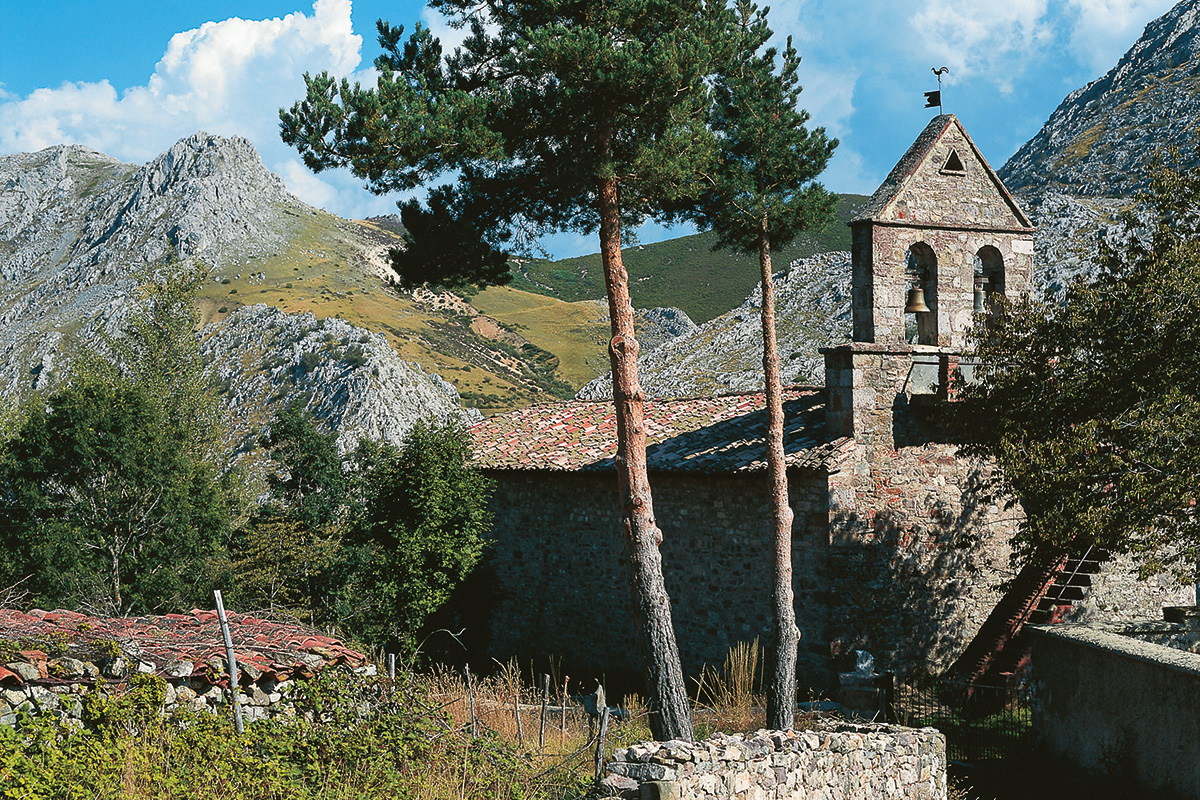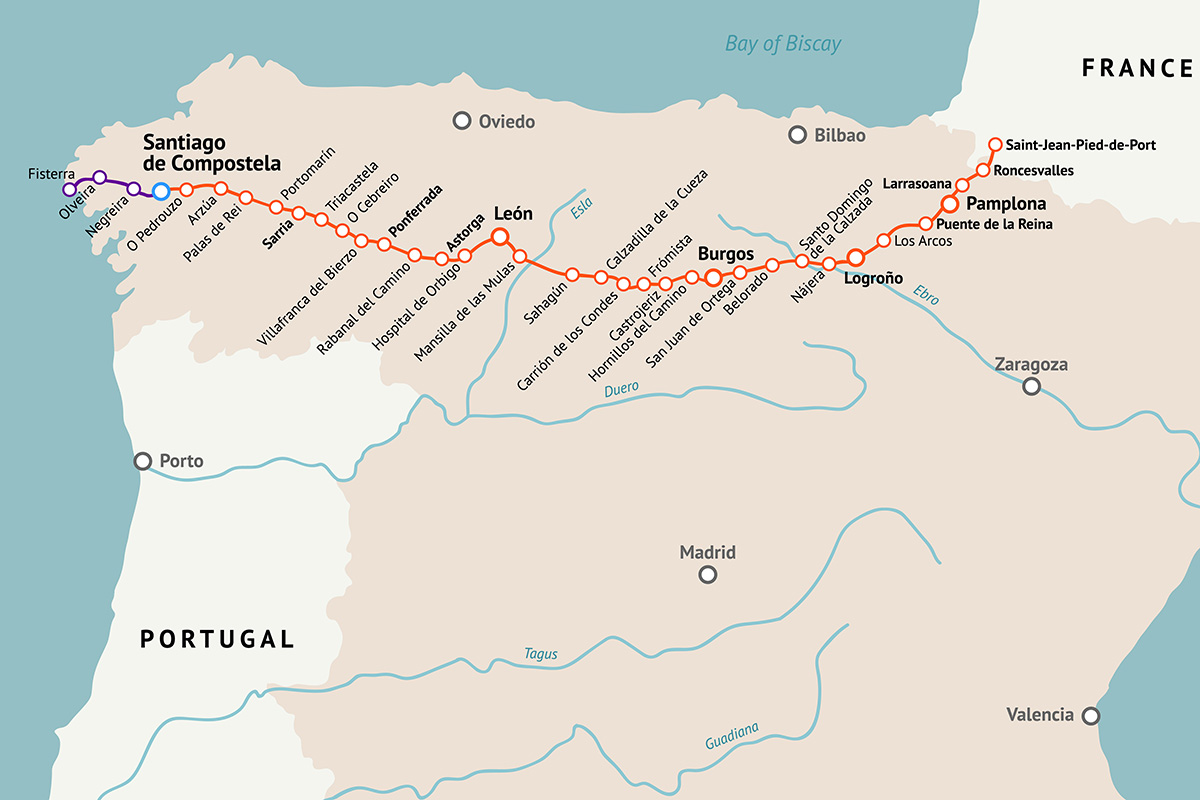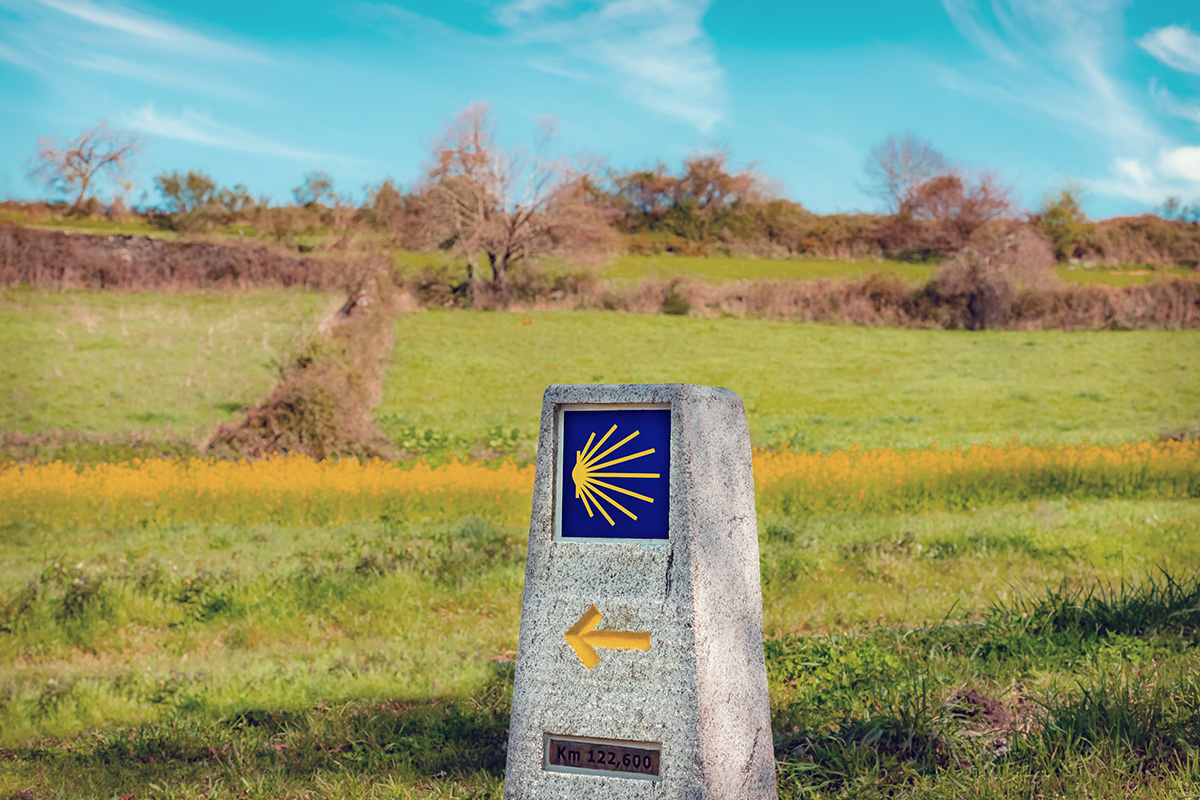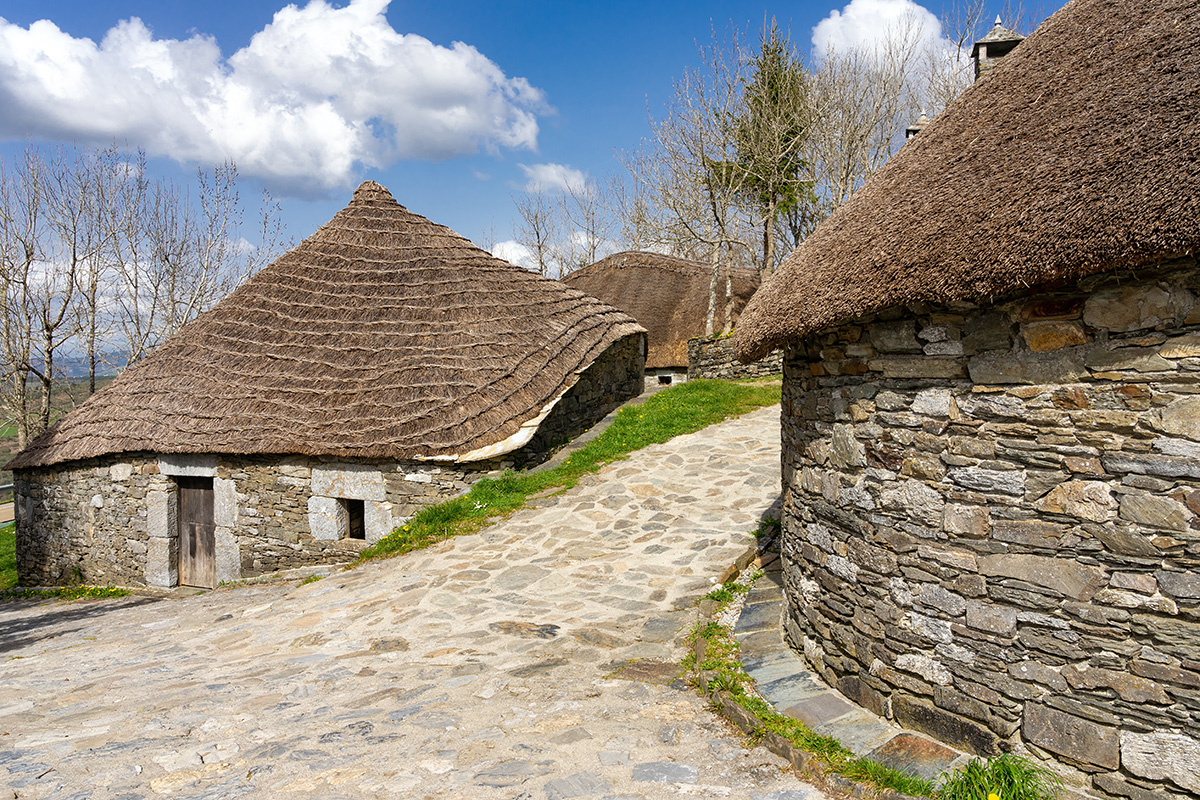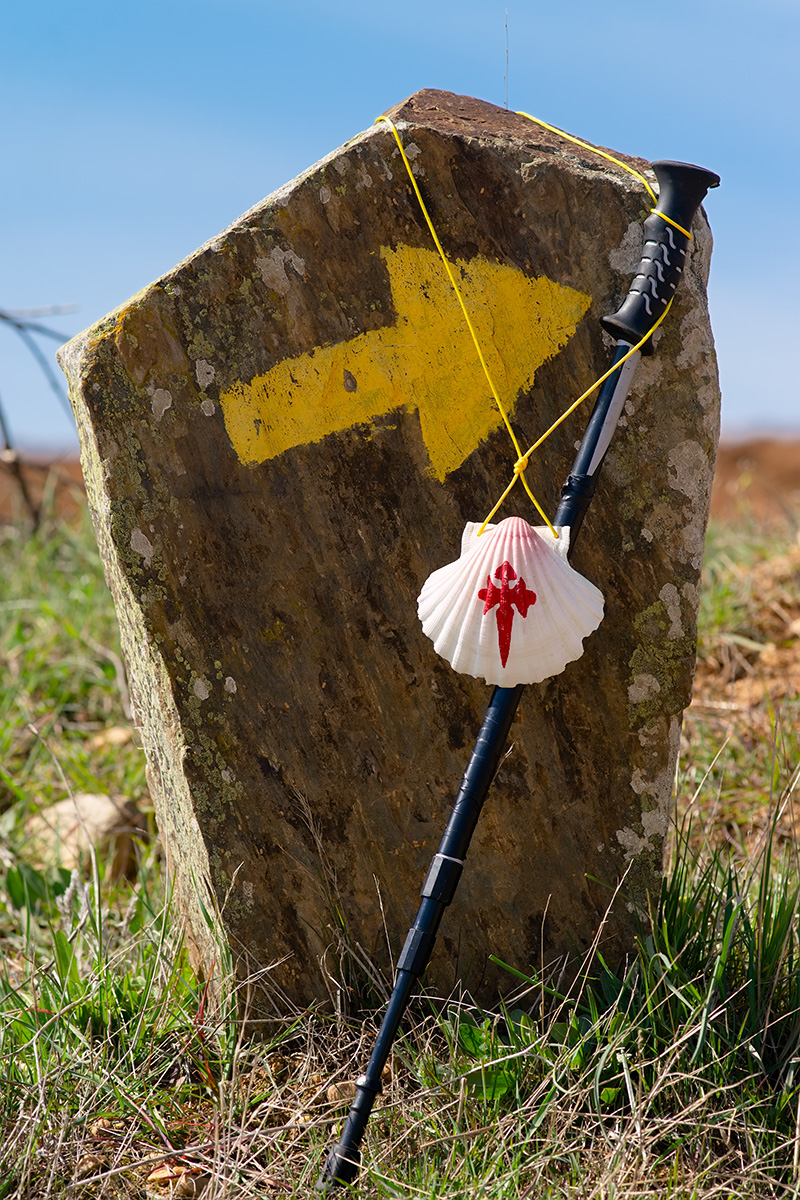
A Journey Along the Way of St. James: The Camino Francés
As the saying goes, many roads lead to Rome, but at least as many roads lead to the tomb of Apostle James.
February 9, 2023
Hundreds of thousands of pilgrims set out every year with their backpacks to walk the so-called Way of St. James. The destination: the Cathedral of Santiago de Compostela, built on a sacred burial site. It is attributed to James the Elder.
The incomparable landscape along the Way of St. James © optional
In search of your inner self, switching off your mind, getting away from it all, feeling the religious spirit - the reasons for embarking on a journey on the Way of St. James are varied and absolutely individual. Often the desire for a borderline experience and a personal life change are behind it. Admittedly, a pilgrimage tour of several days is a challenge, although it could hardly be more formative and fulfilling, especially because you often meet the same people in the various pilgrim accommodations, which usually develop into friendships. Strictly speaking, the Way of St. James passes through many European countries, such as Germany, Poland and Liechtenstein. But the most popular and well-known is probably the last section of the path in Spain, THE Way of St. James, also called "Camino Francés".
"Camino Francés", the classic
Length: 780 kilometers
Duration: 30-40 days
Link: spain.info/en/jacobean-path/camino-frances-jacobean-path/
The complete route of the classic Camino Francés © Shutterstock
The incomparable nature, the traditional places and the special encounters with other people are probably what pilgrims remember the most on this route. The Camino Francés leads across northern Spain, from Saint-Jean-Pied-de-Port to Santiago de Compostela. 780 kilometers long, 33 stages - those who set out on the Camino Francés need time and stamina. While you should allow around 30 to 40 days for the entire route, it is also possible to complete only partial stages. Experienced pilgrims recommend an average daily distance of 18 to 20 kilometers and sufficient recovery periods to be able to process the impressions that you gather on the way. Two examples:
Sarria - Santiago de Compostela
The most popular starting point on the Camino Francés, if you look at the pilgrim statistics, is without a doubt the small town of Sarria. 115 kilometers are on the clock, if you have mastered the way from Sarria to Santiago de Compostela. You should plan between 5 to 7 days for this section. It leads through the green Galicia, past romantic churches and wayside crosses and villages of Celtic origin.
The kilometer stones show you the right way on the Way of St. James - here outside Sarria © Shutterstock
O Cebreiro - Santiago de Compostela
For those seeking a longer journey, you can also start in O Cebreiro. From here you walk via Triacastela to Sarria and from there on the same route as above to Santiago de Compostela. The total of 150 kilometers take about 8 to 9 days. The small village of O Cebreiro is worth a visit for its pallozas alone, traditional round houses with thatched roofs.
In O Cebreiro you can find the typical pallozzas © Shutterstock
Léon - Santiago de Compostela (by bike)
A pilgrimage by bicycle - the Camino Francés also offers the perfect conditions for this sporty form of travel. In order to receive the "Compostela", i.e. the certificate at the end of the path, you have to show 200 kilometers of distance. The small town of Léon is therefore a popular starting point. From there, you travel about 300 kilometers to Santiago de Compostela, which can be done in a week with an average daily distance of about 50 kilometers. Those who have more time can also cycle the entire Camino Francés in just under two weeks.
The Way of St. James shell
Those who have successfully completed the Way of St. James (or parts of it) and have arrived at the destination typically receive a pilgrim's certificate. But much more important than the certificate is the scallop shell. Even before the 13th century, it was the reward to those who completed the Way of St. James. While back in the day it was bought at the end of the route, today pilgrims wear it on their backpacks as a sign of recognition during the route.

